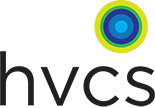Some people may say that AIDS doesn’t matter any more. We hear it all the time, especially from young people: “AIDS isn’t a big deal.” “I can pop a pill to take care of HIV.” “I’m not concerned about getting AIDS.” Is AIDS a death sentence? No, not in the way it once was—thanks to medical advancements and organizations like us that advocate for people living with the virus. But it’s still devastating, expensive to treat, has significant health implications, and carries a huge amount of social stigma.
If we change nothing about our current approach to AIDS, the future is bleak. New studies show that half of all young gay men could be HIV-positive by the time they reach 50. African-Americans account for 39% of people living with HIV in the Hudson Valley, though they make up only 11% of our population. Of all the new infections in the Hudson Valley, over 50% are in young gay men of color. We’re on the verge of a new HIV epidemic—if we carry on with no changes.
Hope for the Future
A big part of our mission has always been to contribute to ending the HIV epidemic. For the first time in decades, however, there’s talk about actually making that happen. New York State has just released an “End of AIDS” plan with concrete steps for reducing HIV, hepatitis C, and sexually transmitted diseases.
A big part of this plan is to address the “Treatment Cascade.” (See http://blog.aids.gov/2012/07/hivaids-treatment-cascade-helps-identify-gaps-in-care-retention.html for a full explanation.) To simplify it, the first goal is to get everyone to know their HIV-status. Then provide and maintain medical care and drug treatment for all those who are HIV-positive, so that they maintain an “undetectable” level of HIV in their blood. With fewer copies of the virus circulating among the populace, transmission rates will go down. Treatment is prevention. The future of HIV prevention also looks to target funds to populations at astronomically high risk, such as young gay men of color.
We Still Need You
We need you to join us in our quest for a Hudson Valley free from HIV/AIDS. Statistics show that our region lags behind the rest of the state in its percentage of HIV-positive people who receive medical care. Our clients also struggle with a lack of affordable housing and access to healthcare due to inadequate transportation. We need to get every HIV-positive person into care—and we need to make sure that everyone who is HIV-positive knows they’re positive (1,800 Hudson Valley residents don’t know they have HIV yet.)
We’re on the right path. Our HIV prevention programs have seen huge increases in the past year—some as high as 287%. We’ve just added new street outreach services to substance users in the Mid-Hudson. Our programs are doing more with less funding, operating on shoestring budgets yet achieving astounding results. And as we identify more and more people at risk, we need to support them on their path to health and safety.
These are our clients’ struggles—and our challenges. We need your support and your donations to reverse the course of the epidemic. We’ve got a roadmap to the end of AIDS, but we’ll never make it there without the funds and resources to complete the journey. Rather than wait for the government to catch up, we want to innovate, initiate and get a head start on eliminating HIV.

